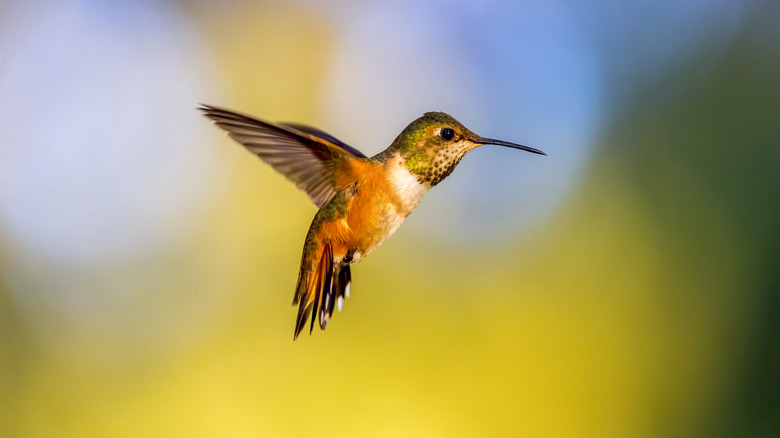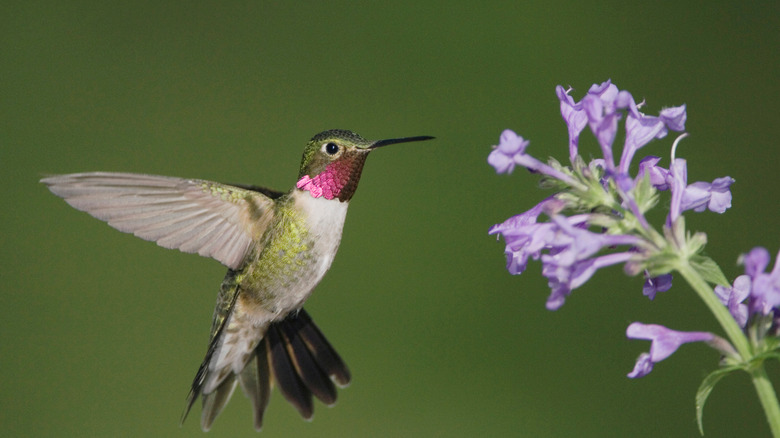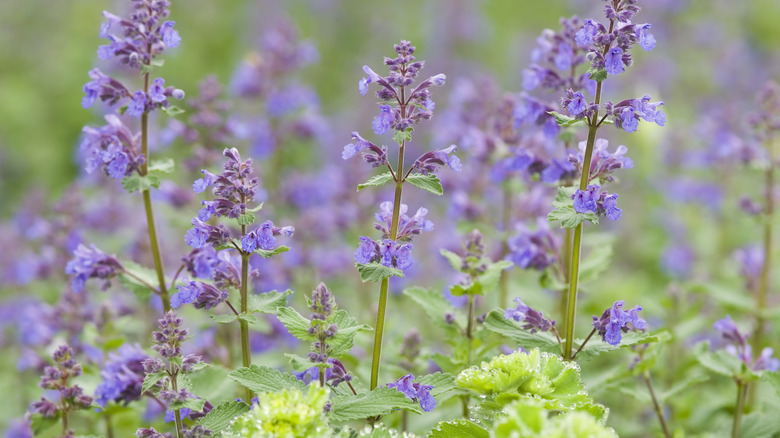The Lavender-Blue Plant That Will Encourage Hummingbirds To Visit Your Yard
Birds have likes and dislikes just as we do, which makes them all the more entertaining to watch. While some birds might love picking away at seeds or suet cakes, there are others that make the most of the plants sprouting in your garden. Hummingbirds are one such species — if they're not sipping sugar water from a feeder, they're likely hovering over a variety of bright and bold flowers, dipping in and out to collect nectar.
If you're looking to fill your garden with more flowers that hummingbirds love, there's one choice to consider that looks a little different from the bright red columbines and hot pink fuchsias many people turn to first. That plant is catmint, and its purple and blue flowers look beautiful among other groundcovers. Even better is that hummingbirds love it, too. Here's why these birds are fans of the plant and some considerations for planting it at home, including what other creatures it might attract to your backyard.
Why hummingbirds love catmint
As an avid gardener or birder, you likely already know that the color red attracts hummingbirds. That being said, there are plenty more flowers hummingbirds love that aren't red in color — catmint being one of them. Catmint, also known as nepeta, is often used as a groundcover, but some varieties are perfect for summoning hummingbirds to your yard. While it ranges in color from lighter blue to deeper purple to white, it's likely the tubular flowers that draw these tiny birds to the plant.
The elongated shape of the catmint's flower is like Cinderella's glass slipper for a hummingbird — it's the perfect fit for its long bill and tongue. The smell of catmint is pleasant for humans and other critters – including cats, hence the name — and it arguably could be another reason why hummingbirds like it. More studies are being done on hummingbirds' sense of smell, which was originally thought to be quite poor but that has been put into question. While it's impossible to ask the birds stopping by your backyard what they like, planting catmint can increase the chances of seeing hummingbirds and give you another colorful option for your garden.
Tips for growing catmint and precautions
Catmint comes in several varieties, making it easy to choose the perfect type for your garden. Six Hills Giant and Siberian catmint are two of the taller options, which might make it easier to see when you have hummingbirds coming in and out. Growing and caring for catmint is by no means tricky. This plant can handle full sun to partial shade and can tolerate most soils and little watering. Pruning and cutting back catmint can also boost the health of the plant and help it grow back.
This flowering species also comes with a potential warning in its name. Catmint has the propensity to attract feline pals over to your garden because of its fragrance (it's in the same family as catnip, after all), which is fine for some gardeners but worrisome for others. This is especially true if you enjoy birdlife in your backyard. Fortunately, there are safe ways to keep outdoor cats out of your garden, like using motion-sensor ultrasonic repellents or planting flowers with off-putting odors, which won't harm them and will keep visiting birds safe, too. While cats may like it, luckily so do hummingbirds and other pollinators like honeybees. Catmint also scores highly when it comes to plants that deer avoid eating. The benefits of who catmint can attract and repel may outweigh the odds of it bringing cats over.


